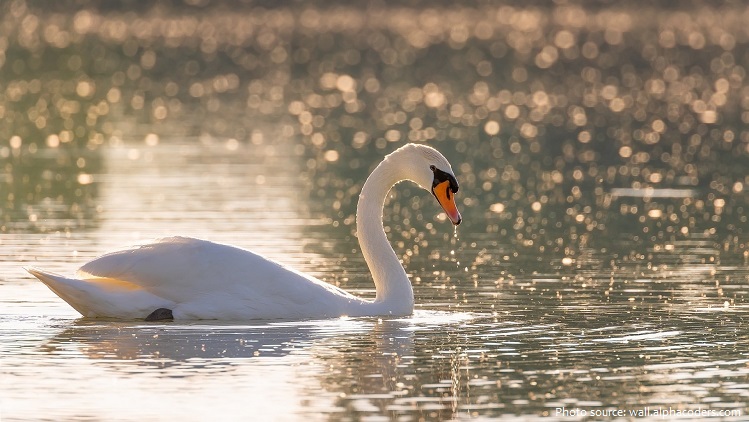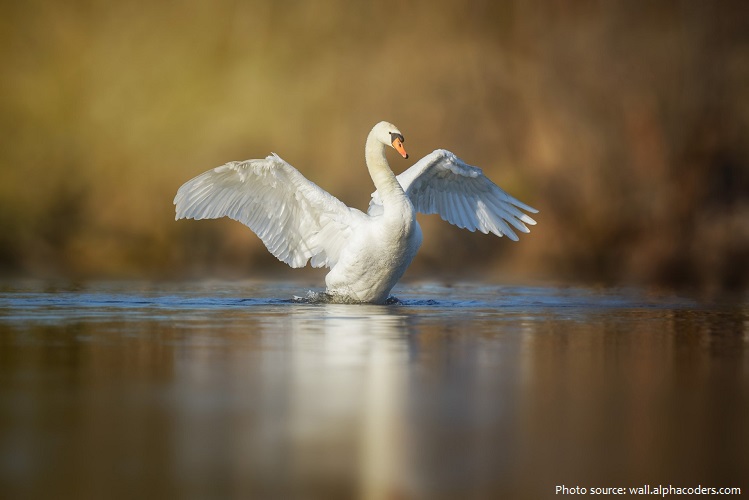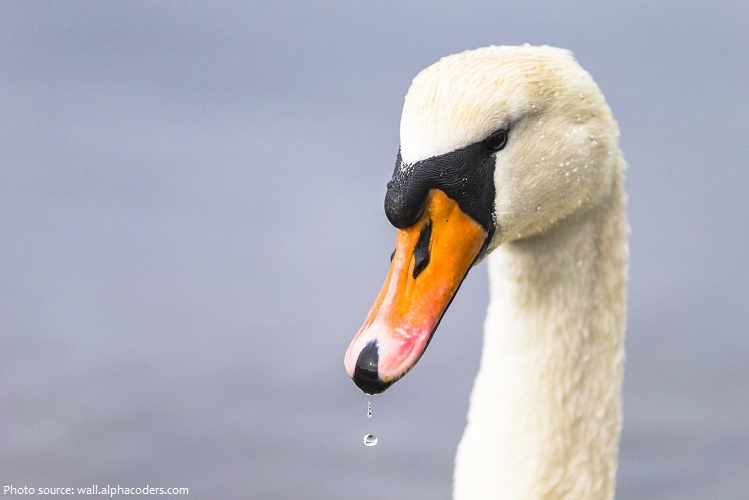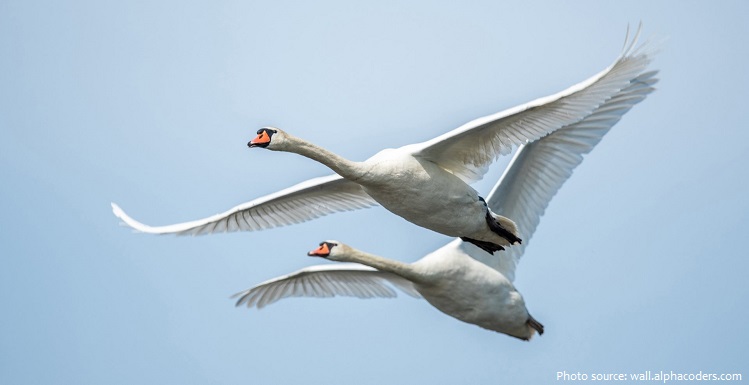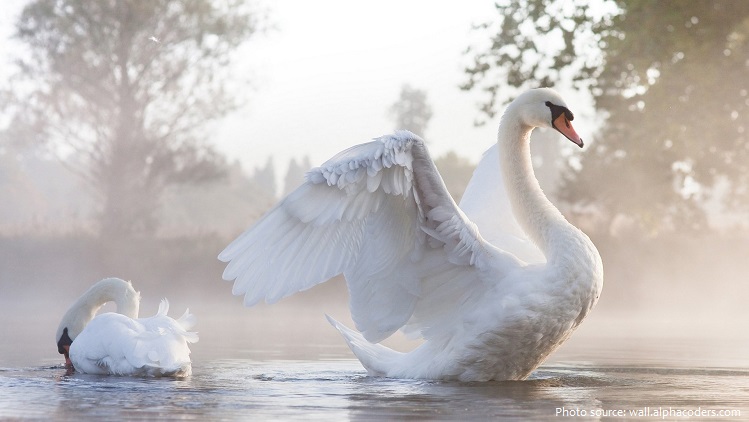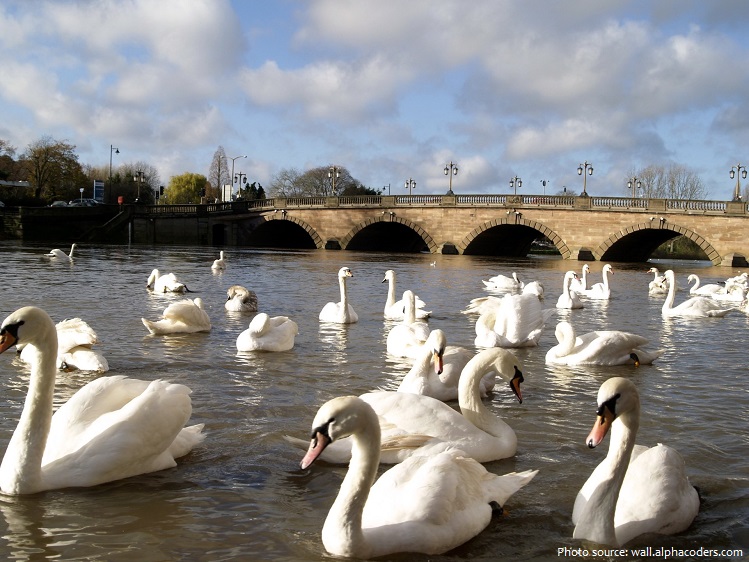The mute swan (Cygnus olor) is a species of swan and a member of the waterfowl family Anatidae.
It is the most recognizable swan species and is famed for its grace and beauty.
The mute swan is native to Europe and Asia. It is partially migratory throughout northern latitudes in Europe and Asia, as far south as north Africa and the Middle East.
Mute swans are the most common swans in the wild, in parks or on country estates in their native range.
This species was introduced to North America from the mid-1800s through the early 1900s. Individuals were imported to many areas of North America as an adornment to city parks and large estates, and for zoos and aviculture collections.
Mute Swans can live up to 20 years but their average lifespan is about 7 years in the wild. In captivity, they have lived 30 to 40 years.
Adults of this large swan typically range from 140 to 160 cm (55 to 63 in) long, with a 200 to 240 cm (79 to 94 in) wingspan.
The mute swan is one of the heaviest flying birds. It weigh from 8.5 to 12 kg (19 to 26 lbs).
This large swan is wholly white in plumage with an orange beak bordered with black.
It is recognisable by its pronounced knob atop the beak, which is larger in males.
The name ‘mute’ derives from it being less vocal than other swan species. However, make a variety of grunting, hoarse whistling, and snorting noises, especially in communicating with their cygnets, and usually hiss at competitors or intruders trying to enter their territory.
When swimming, a mute swan holds its neck in a graceful curve with the bill pointing downward, as opposed to other swans, which carry their bills level and necks erect.
Top flight speed is 80 to 90 km/h (50 to 56 mph).
The diet of mute swans consists of aquatic vegetation, and small proportions of insects, fish, and frogs. Mute swans do not dive, instead they plunge their head and long neck below the water’s surface.
Mute swans are usually strongly territorial with just a single pair on smaller lakes, though in a few locations where a large area of suitable feeding habitat is found they can be colonial.
Mute swans set up large territories of to 1.5 to 4 hectares (4 to 10 acres), which can include an entire small lake or pond.
Mute swans form monogamous pair bonds that last for many years, and in some cases these bonds can last for life.
Nest sites are selected and breeding begins in March or early April. These swans either build a new nest or use a previously constructed mound, such as a muskrat house. The nest is large, made of aquatic vegetation, and lined with feathers and down.
Each pair usually lays one set of eggs each season. The female swan lays between 4 and 10 eggs. Incubation lasts 36 to 38 days. The chicks are brownish gray and gradually turning white within the next 12 months. They are able to fly in about 60 days. Chicks can ride on the backs of their parents or under their wings. By the following breeding season the parents drive the young away.
The fairy tale “The Ugly Duckling” by Hans Christian Andersen tells the story of a cygnet of a mute swan ostracised by his fellow barnyard fowl because of his perceived homeliness. To his delight (and to the surprise of others), he matures into a graceful swan, the most beautiful bird of all.
In the famous ballet Swan Lake, the main character, Princess Odette and her companions are turned into mute swans by a wicked spell.
Traditionally, the British Monarch retains the right to ownership of all unmarked mute swans in open water, but only exercises ownership on certain stretches of the River Thames and its surrounding tributaries.
The mute swans in the moat at the Bishops Palace at Wells Cathedral in Wells, England have for centuries been trained to ring bells via strings attached to them to beg for food. Two swans are still able to ring for lunch.
The mute swan has been the national bird of Denmark since 1984. Prior to that, the skylark was considered Denmark’s national bird (since 1960).
A mute swan was shown on the 2004 commemorative Irish Euro coin to mark the accession of the 10 new member states which occurred during the Irish Presidency of the European Union.
